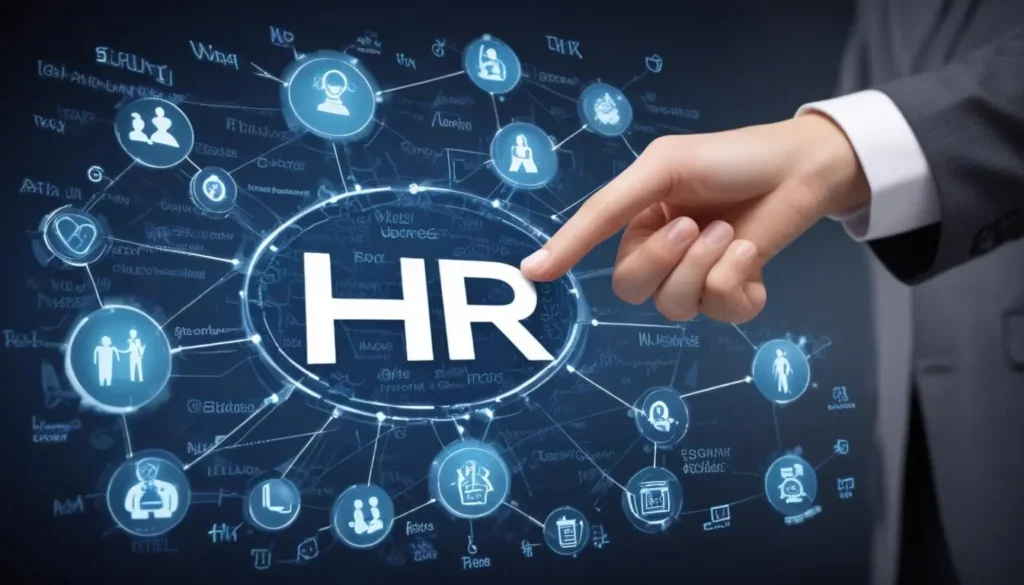Managing employees has come a long way. HR technology now allows companies to handle tasks more efficiently and focus on growing the business. Consider how much time is spent on manual processes like payroll, benefits administration, and performance reviews.
HR technology can automate these tasks, freeing up valuable time for more important activities. This shift not only boosts productivity but also enhances employee satisfaction.
Imagine having more time to make better decisions and support your workforce effectively.
Let’s explore how HR technology can simplify your work life, transform your HR processes, and drive business success.
Let’s Get Familiar with HR Technology

HR technology includes various tools and systems designed to manage and optimize human resources. These tools help you handle tasks like payroll, benefits administration, performance tracking, and recruitment. Using HR technology, you can automate repetitive tasks and focus more on strategic activities that drive business growth.
The Role of HCM and HRIS
Human Capital Management (HCM) and Human Resource Information Systems (HRIS) are two key types of HR technology.
What is HCM?
HCM is a comprehensive set of practices and tools that help you manage your workforce more effectively. It includes recruiting, onboarding, performance management, learning and development, and succession planning. HCM aims to maximize the value of your employees by improving their skills and engagement.
What is HRIS?
HRIS is a system used to collect and store data about your employees. It handles tasks like payroll, benefits administration, time and attendance, and compliance. HRIS helps you manage employee information efficiently and ensures data accuracy.
Once you know the nitty gritty, you will see that there are several advantages of HCM versus HRIS, and you can use them to your advantage.
Well, both HCM and HRIS offer significant benefits, but they serve different purposes. HCM provides a broader scope, focusing on strategic HR activities that enhance employee development and engagement.
On the other hand, HRIS focuses on administrative tasks, ensuring data accuracy and compliance.
Key Benefits of HR Technology
Implementing HR technology can offer several advantages for your organization. Here are some key benefits that you can see when you start using this technology for your business.
Increased Efficiency
HR technology automates repetitive tasks, freeing up your HR team to focus on more strategic activities. This leads to improved productivity and efficiency. For example, automated payroll systems can handle complex calculations and reduce the time spent on manual data entry.
Improved Data Management
With HR technology, you can store and manage employee data in a centralized system. This ensures data accuracy and makes it easier to access information when needed. Additionally, you can generate reports and analytics to gain insights into your workforce, helping you make informed decisions.
Enhanced Employee Experience
HR technology can improve the overall employee experience by providing self-service portals for tasks like updating personal information, accessing pay stubs, and enrolling in benefits. This empowers employees and reduces the administrative burden on your HR team.
Better Compliance
Keeping up with changing labor laws and regulations can be challenging. HR technology helps you stay compliant by automating compliance-related tasks and providing alerts for upcoming deadlines. This reduces the risk of non-compliance and potential penalties.
How to Implement HR Technology Successfully
Implementing HR technology requires careful planning and execution. If you miss any important step, you may have to face certain issues. Here are some steps to help you get started:
Assess Your Needs
Before choosing an HR technology solution, you must always assess your organization’s needs and goals. Identify the key areas where you need improvement and the specific features you require. This will help you select the right tools that align with your business objectives.
Involve Key Stakeholders
Involve key stakeholders, including HR, IT, and management, in the decision-making process. Their input is crucial in selecting the right solution and ensuring successful implementation. Additionally, involving employees can help address their concerns and increase buy-in.
Choose the Right Vendor
Select a reputable vendor that offers reliable and scalable HR technology solutions. Look for vendors with a proven track record and positive customer reviews. Additionally, consider factors like customer support, training, and integration capabilities.
Plan for Implementation
Create a detailed implementation plan that includes timelines, milestones, and responsibilities. Ensure that you allocate sufficient resources for the project and address potential challenges. Regularly communicate with your team and stakeholders to keep everyone informed of the progress.
Provide Training
Ensure your HR team and employees receive adequate training on the new system. This will help them understand how to use the tools effectively and maximize their benefits. Additionally, provide ongoing support and resources to address any issues that may arise.
In Conclusion
HR technology can transform your organization’s efficiency and effectiveness. All you have to do is to choose and implement the right tools. This will help you streamline operations, improve employee satisfaction, and ensure compliance with regulations. And this will ultimately benefit your HR team and contribute to the overall success of your business. So, you should invest in HR technology to keep your company competitive and ready for the future.





